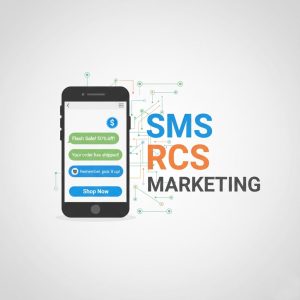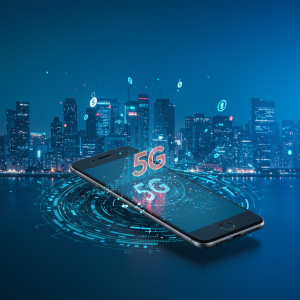Gamification in Advertising How It Works and Why It’s Effective

Every day, audiences are bombarded with advertisements on every platform and device they use. Cutting through the noise demands innovative approaches that spark engagement and interaction. Enter gamification in advertising, a strategy that combines the compelling elements of gaming with traditional advertising techniques.
This blog will explore what gamification in advertising entails, why it works so well, and how businesses can use it to captivate audiences, increase brand loyalty, and drive measurable results. Whether you’re a marketer looking to revamp your campaigns or just curious about the buzz, this guide is for you.
What Is Gamification in Advertising
Gamification in advertising refers to the integration of game mechanics into marketing campaigns to engage users and encourage specific actions. By turning ordinary advertising into an interactive experience, businesses can create memorable brand connections and foster consumer participation.
Key Elements of Gamification
To understand how gamification operates, it’s essential to look at the game elements commonly employed in campaigns:
- Challenges and rewards: Encourage customers to participate in tasks for rewards like discounts or exclusive access.
- Points or badges: Digital achievements keep users engaged by offering a sense of progress.
- Leaderboards: Create a competitive edge by showing standings, encouraging users to beat their peers.
- Narratives and storytelling: Immerse users with a compelling storyline tied to your brand.
- Timed events or countdowns: Build urgency with limited-time games or challenges for immediate participation.
Examples in Action
Some standout examples include Starbucks’ loyalty app with virtual stickers and contest-based programs that reward repeat purchases, McDonald’s Monopoly promotions integrating game boards and prizes, and Nike’s interactive running app, which challenges users to level up while using their products.
Why Gamification Works in Advertising
There’s a reason gamification has proven so effective across industries; it taps into fundamental psychological factors and behaviors in users.
Engagement That Feels Personal
Interactive, game-based campaigns demand attention. Unlike static ads, gamification fosters user involvement, creating a personal connection. For instance, if a clothing company uses a simple mix-and-match game where customers design their perfect outfit, they’re not just passively absorbing a message; they’re actively participating in it.
Capitalizing on Rewards Psychology
People are hardwired to enjoy rewards. Psychologist B.F. Skinner demonstrated this through operant conditioning experiments, showing how small rewards keep behaviors consistent over time. Gamification applies this by using incentives such as points or discounts to encourage ongoing user interaction.
The Power of Competition
Adding leaderboards or social share features taps into people’s natural competitiveness. Competing against friends or community members adds another layer of excitement to the campaign, ensuring it gets talked about even outside the gaming experience.
Increased Memory Retention
A gamified ad doesn’t just entertain; it ensures your message sticks. According to a study by The Journal of Advertising Research, audiences are 15% more likely to recall brands when they interact with gamified content instead of passively viewing traditional ads.
How to Create a Successful Gamification Campaign
Not all gamification efforts are created equal. To create a campaign that resonates, consider these steps.
Understand Your Audience
The first step to building an effective gamified ad is knowing your audience. What can spark their curiosity? Are they competitive or collaborative? For example, a fitness tracker brand could design challenges where users compete as teams or individuals to hit monthly activity goals.
Set Clear Objectives
Is your gamification campaign geared toward lead generation, customer retention, brand awareness, or something else? Defining clear objectives ensures every aspect of your gamification aligns with your business goals.
Keep It Simple and Intuitive
There’s a reason Candy Crush dominates. Its design and mechanics are instinctually easy to figure out. Users should feel excitement from participating—not frustration figuring out how. Funky animations are optional, but simplicity is non-negotiable.
Incentivize Meaningfully
While virtual points and badges are fun, offering something meaningful like discounts, free products, or exclusive access to events dramatically increases participation. For example, Sephora’s Beauty Insider loyalty points can be redeemed for exclusive product samples.
Measure and Optimize
Every gamification campaign should have measurable KPIs such as participation rate, time spent engaging with the game, and post-ad conversion rates. Use these insights to understand what’s working and refine future campaigns.
Challenges in Gamification
While gamification offers many advantages, it’s not always smooth sailing. Brands should be aware of these potential challenges.
- Over-complication: If a game requires too many steps or comes with a high learning curve, users will drop it quickly.
- Costs vs ROI: Developing a high-quality gamified experience can come with a higher upfront expense than traditional advertising. It’s critical to ensure the potential return justifies the initial investment.
- Short shelf life: Gamified campaigns can have a finite appeal. Extensions or related follow-ups may be necessary to maximize lifespan.
Successful Brands Using Gamification
Starbucks
Starbucks’ rewards system gamifies its customer loyalty program with stars, levels, and exclusive perks. Customers enjoy a continuous feeling of achievement with every purchase, driving loyalty and repeat business.
Duolingo
The language-learning app is a masterclass in gamification, using competitive streaks, progress bars, and virtual rewards to keep users consistent and invested.
KitKat
KitKat’s “Cross Your Fingers” campaign encouraged users to unwrap chocolate bars, hoping for surprise prizes. The added gamification turned something as routine as opening a candy bar into an exciting event for millions of customers.
The Future of Gamification in Advertising
Gamification is evolving alongside technology. AR, VR, and AI are revolutionizing the ad game landscape, bringing new, immersive experiences to the forefront. Collaborative storytelling using tools like the Metaverse is poised to further gamify marketing, making campaigns both interactive and unforgettable.
Hybrid gamified ads—for instance, experiences that transition between websites and real-world locations (scavenger hunt, anyone?)—will expand opportunities. The line between a brand campaign and a full experience will blur.
Level Up Your Advertising Game
Gamification in advertising offers businesses a unique way to engage audiences, boost loyalty, and stand out in a crowded market. By blending entertainment with brand messaging, you can create campaigns that don’t just inform but inspire action.
Are you ready to turn your ads into unforgettable experiences? Start brainstorming how gamification can work for your business. For more expert tips, guides, or strategies, keep an eye on our blog.





